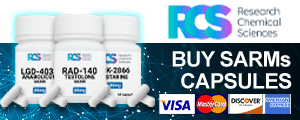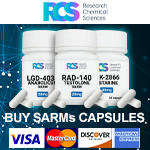DMG
A Very Negative Report
--------------------------------------------------------------------------------
PANGAMIC ACID / DMG
VITAMIN B15. It has been claimed, at one time or another, that pangamic acid, Or vitamin B15, as it is popularly, but erroneously, known, cures nearly everything. Its credentials as a panacea are said to be based on its extreme potency as an oxygenator of body tissues, bringing them all up to optimal snuff, enhancing, among other things, the brilliance and flash of orgasm, increasing ones ability to do yoga, mopping up free radicals like mad, saving people from the need for amputation of gangrenous limbs, etc., etc.
It would be wonderful if pangamic acid (which is not a vitamin by any stretch of the imagination; there is no evidence whatever that the body has any dietary need of it) could do even a small fraction of the things claimed for it. Unfortunately, there is only scant evidence that it can have any therapeutic effect in any ailment and there are claims now that two of the active ingredients in pangamic acid may promote cancer.
Almost all of the claims made for pangamic acid or dimethyl glycine (DM(G), which is the hypothesized active ingredient, are based upon Soviet research. A researcher who investigated the Soviet work noted that nearly all of these studies suffer from methodological flaws which seriously limit their probative value. Often patient populations and diagnostic criteria are incompletely described, and comparisons between treated subjects and suitably matched controls are lacking. Another author has similarly faulted the Soviet research, noting the methodological laxness and wild-eyed enthusiasm of Russian clinical reports. Claims that DMG has lipotropic effects (promoting optimal utilization of fats) are persistent in the literature and are not in themselves farfetched, but there are other substances, such as choline, that work better in this regard and are safer.
Studies of DMG outside the Soviet Union have generally failed to find any therapeutic value in it. One group reported that DMG is of no value in the treatment of epileptic patients with refractory seizures (the type that do not yield to standard medications). Their study was double-blind. Others have reported a significant DMG induced enhancement of both humoraland cell mediated immune response, but there is no confirmation of this work. A recent investigation of DMG s reputed ability to boost energy and athletic performance found no effect whatsoever.
It is unfortunate that there has been so much hype and so many unsubstantiated claims made for DMG. It is possible that it may have some positive value, but most researchers are now loath to investigate DMG for fear of fueling even higher hopes for the substance. This fear is heightened by the possibility that DMG may have harmful side effects.
There is evidence that DMG, thought by many to be the active product of pangamic acid, may be mutagenic and thus potentially able to cause cancer. In the widely accepted test of mutagenesis, substances that turn out to be mutagenic have, according to one survey, a 90 percent probability of being carcinogenic as well.
Neville Colman, M D, of the Hematology and Nutrition Laboratory of the Bronx Veterans Administration Medical Center in New York, concluded, according to an article in JAMA that the main component of this vitamin B15 formulation is capable of reacting to form a potential carcinogen under conditions simulating those found in the human digestive tract.
Other researchers have reported that di-isopropylamine di-chloracetate (DIPADC(A), the major constituent of another pangamic product, is also mutagenic. These findings, though they require confirmation by others, constitute ominous red flags.
The FDA has sought to have pangamic acid banned as an unsafe food additive. Pangamic acid may, indeed, be unsafe, but the additive argument may be doomed since it can be demonstrated that DMG, at least, is an intermediary metabolite naturally present in many foods.
In any event, the intelligent consumer will steer clear of any and all products said to be pangamic acid, Calcium pangamate, B15, DMG or anything related thereto.
The writers recommendation is unequivocal: Don't use any products labeled or related to pangamic acid,


 Please Scroll Down to See Forums Below
Please Scroll Down to See Forums Below 












